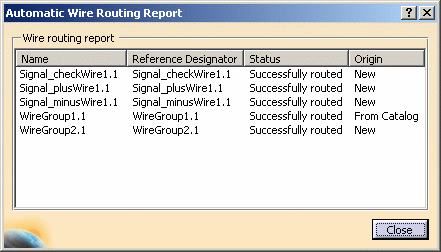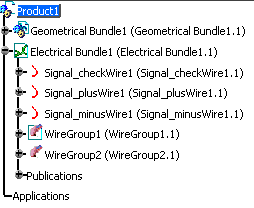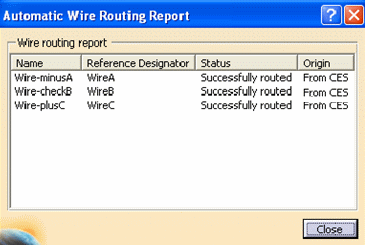Open “…/online/ewrug_C2/samples/XMLrouting/Product1.CATProduct”
Make sure the CATIA options are properly set up: for the purpose of this scenario
- In
electrical mapping:
- Map the wire and wire group types
- Select ...\online\ewrug_C2\samples\XMLrouting\WireCatalog.catalog as electrical working catalog.
- In
external data interfacing:
- Enable the External System Interfacing
- Select ...\online\ewrug_C2\samples\XMLrouting as System Repository
-
Click Automatic Routing
 .
. -
Select one or more wires and/or wire groups and click the right arrow.
The selected wires and wire groups shift to the right column: they will be routed. -

Selecting this check box starts the network assistant and detects and fixes connection problems. -
Click Route.
The Automatic Wire Routing Report is displayed. 
Since the routing now integrates the wire catalog: - If the wire or wire group is referenced in the catalog, the report indicates that the origin is From Catalog.
- If the wire or wire group is not referenced in the catalog, the report indicates that the origin is New.

Note that the specification tree icons also show that the first wire group is resolved; the other wire group and all wires are new. -
Close the report window.

- Selecting an individual wire in a wire group highlights the route of this wire.
- Selecting a wire group highlights the route of the entire group.
